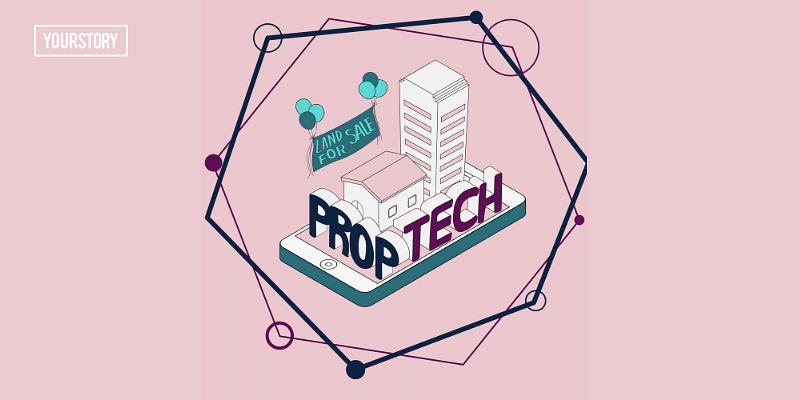Real estate is a unique asset class—one of the oldest, one which reflects economic health, and one that has buyer emotions deeply tied into it. it has been through multiple cycles of innovations since the early days of classifieds, slowly evolving towards better symmetry of information and buying.
There have been structural changes over time from multiple directions. With the emergence of a whole new class of the first-time wealthy (AKA new money), investing in real estate is becoming a large opportunity where innovative models are coming up to attract these value pools.
The introduction of RERA has strengthened regulation and buyer safety, enabling more transparency in the process of home buying. This has meant developers need to better their tooling to track and document the construction process. There has been support for lower interest rates in recent years that has pushed for more investments within real estate (although rates are now inching upwards).
The pandemic also re-induced the desire to own a home (and maybe a second home) across a large set of people.
Proptech companies like PropTiger, NoBroker, and Strata represent different stages and sub-markets where innovations within the real estate sector have occurred over the last decade.
The industry is seeing emerging trends and themes within the space to help guide entrepreneurs that are already building or building within it. Here are four major emerging trends in solving for problems:
Online buying amid lack of transparency
Home buying continues to be plagued by information asymmetry. In primary home purchases, information asymmetry exists while in secondary home purchases, brokers often elongate the process due to a lack of incentives to turn around sales quickly. This leads to a loss of value within the market for buying and selling homes.
Directly property buying models have now attracted heavy capital across global markets but are yet to see a large outcome in India, yet the space is very much up for grabs.
Given the lack of transparency in buying/selling secondary homes, an organised player can manage this process end-to-end using upfront capital as a way to unlock a unique supply of homes, and then deliver value through a clean, trustworthy home discovery and buying experience. There are already early signs of teams building within the space and local versions of this model already exist in the form of ATS (agreement to sell) contracts.
Overall, this follows trends of moving from listings-based marketplaces to ownership-led models that have already been seen in other assets (such as cars), but the pain points and opportunities within real estate are deeper, with a lot of value left to be captured.

Creating better home experiences
Rental yields in India have hovered around the 2-3% range for the longest time, making the proposition of buying a home to rent out financially unattractive. India lies in the bottom 10% of the top 100 countries when comparing rental yields against mortgage rates. Right from the quality of new inventory available for rentals to middlemen and processes involved in the rental process, a lot in the sector remains broken and lacks incentives to bring solutions.
People have barely tried to solve for home rentals for low rental yields mean that there is little value to extract through these transactions. This is a driving reason behind everything about the rental process being painful: lack of visibility on all supply in the market, lack of trust between landlord and tenants, and potential for disputes that lead to a lot of landlords being discouraged from ever listing.
There is an opportunity for an organised player to take over everything that is broken about the process: manage the process of showing homes, manage all communications between landlords and tenants, and standardise the rental contracts and payments process to give more comfort and assurance to both parties. The value unlocked here can come from expanding the market and bringing in previously unavailable homes, charging a service fee for the same.
Make construction monitoring better
From new home construction to interior designing to maintenance services—all categories involving local area contractors have traditionally been painful—with cases of customers getting wrongly charged, timelines getting elongated, and the final quality of work being below expectations. Startups such as Livspace and Homelane have already started to improve the home interiors segment and show how organised players can help here.
As builders look to modernise their processes, tools and software can make the transition easy with multiple facets of the construction processes like project management, workforce management, materials purchase, etc. Today, a lot of this happens over traditional tools such as Excel and WhatsApp, but given these aren’t attuned to industry specifics, they’re not the most efficient.
There is an opportunity for software-led plays that help manage construction site activities with a platform approach, potentially making a dent in the time and resources that go into the building.
Vacation homes as an asset class
While not so much a key problem of the industry, this is more of a trend that entrepreneurs can capitalise upon.
Vacation homes/second homes have recently emerged as an asset class of choice and made themselves even more relevant through COVID-19—as people found having a second home in destinations like Goa and Dehradun can be very rewarding.
Interestingly, this is not just a means to park excess capital but actually can turn out to be a sound financial investment. While residential rental yields in major cities are as low as 2-3%, the rental yield of a home on the outskirts of Mumbai or in Goa has been as high as 10-12%+.
Three broad models that capture value
1. Property management: Organised services are in the early phase of getting built to help existing second homeowners with the upkeep of their property as well as helping with ROI by listing them across OTAs/Airbnb and managing guest experiences.
2. Fractional ownership: Given second homes may still be a difficult investment for bulk of the income groups, fractional ownership models are emerging that help buyers invest a smaller capital for partial ownership of the asset, enabling them to use it for personal use for a certain number of days
3. Enabling investments: The third model plays on investors that are looking at second homes for pure financial returns owing to higher rental yields and eventual capital appreciation. Here, against fractional/whole investment within the vacation home, such enablers help with property management and assurance of the performance of the asset by listing it and realising its commercial value.
(Amit Aggarwal is Principal at Elevation Capital and Manish Advani is Vice President at Elevation Capital)
(Disclaimer: The views and opinions expressed in this article are those of the author and do not necessarily reflect the views of YourStory.)





![Read more about the article [Funding alert] Drone delivery startup TechEagle raises $500K in seed round led by India Accelerator, others](https://blog.digitalsevaa.com/wp-content/uploads/2021/09/Feature-Images-1-1631011862603-300x150.png)




